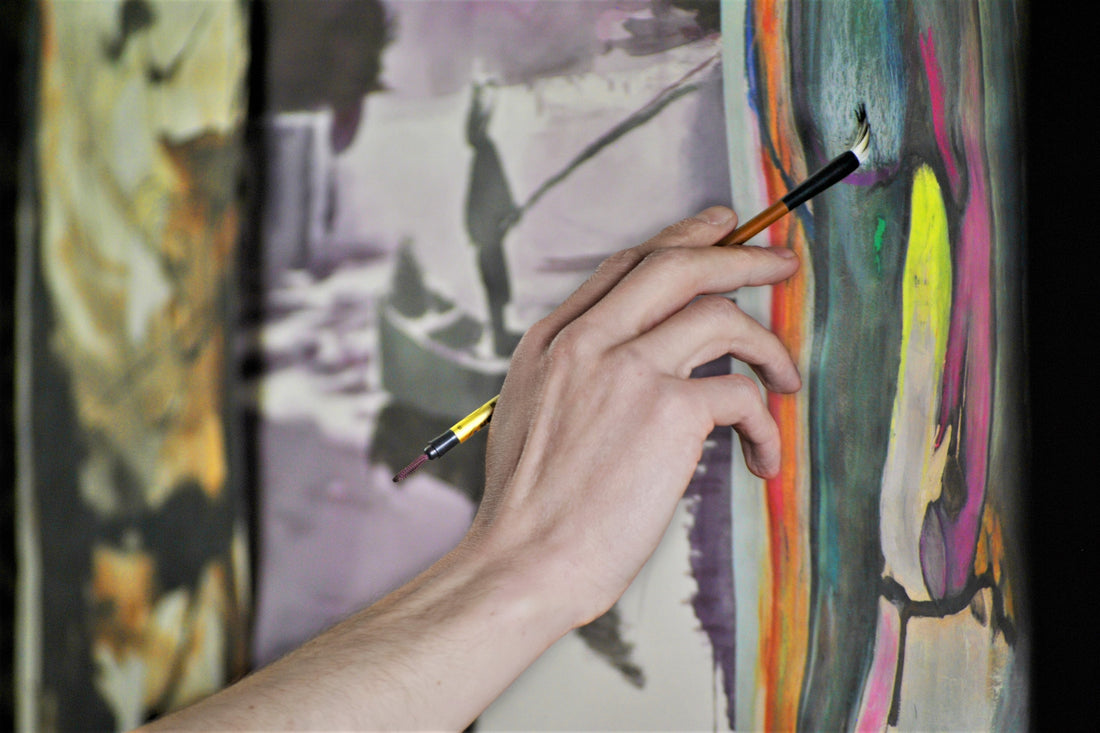Acrylic painting is an exciting and versatile medium that offers endless creative possibilities for artists of all levels.
Discover essential acrylic painting tips: invest in quality paints & brushes, mix colors for variety, work quickly, use palette knives for texture, and embrace experimentation to unleash your creativity!
Explore our curated selection of contemporary artists from around the globe.
Naturalist Gallery offers artist representation internationally. Apply your art.
Whether you are a seasoned professional or a beginner looking to explore a new artistic endeavor, acrylic paint provides a perfect balance of ease and effectiveness. In this article, we have compiled a comprehensive list of 21 essential tips to help you master the art of acrylic painting. Let's dive in and discover the best practices and techniques to create stunning acrylic masterpieces!
-

Acrylic Paint Basics: Acrylic paint falls under the category of water-based paints, making it easy to work with and clean up. Unlike oil-based paints, acrylics dry quickly, allowing artists to add new layers or make changes without extended waiting periods. -
Invest in Quality Paints: Choose professional-grade acrylic paints over craft paints for better pigmentation, smoother coverage, and long-lasting results. Brands like Winsor & Newton, Liquitex, and M. Graham are renowned for their quality.
-

Choose the Right Brushes: Opt for synthetic brushes with smooth bristles, specifically designed for acrylic painting. A set of brushes that includes flat, round, and liner brushes will cover most of your needs. -
Utilize Palette Knives: Experiment with palette knives to add texture and create unique effects in your artwork. Palette knives are particularly useful for scraping paint away or adding thick layers.
-
Mix Your Colors: Learn color mixing using the primary colors (red, blue, and yellow) to create secondary colors (purple, orange, and green). This skill will expand your palette and save you money on buying additional colors.
-
Work Quickly: Acrylics dry rapidly, so it's crucial to work swiftly and make use of extenders to slow down the drying process when needed.
-

Embrace Contrast: Use warm and cold shades to create contrast in your paintings, making them visually interesting and more realistic. -
Paint Densely: Don't skimp on paint; apply it thickly to create bold, vibrant artwork.
-

Use Wide Strokes: Experiment with wide strokes for backgrounds, skies, water, and large areas to add texture and dimension. -
Clean and Care for Brushes: Clean your brushes thoroughly after each painting session to maintain their quality and avoid dried paint buildup.
-

Step Back and Observe: Take breaks and step back from your painting to gain a better perspective on composition, colors, and overall progress. -
Mist Your Paint: Use a fine mist spray bottle to keep your paint moist on the palette and extend the drying time.
-

Start with Undercoating: Use thinned acrylic paint as an undercoat to add texture and enhance your artwork. -
Understand the Role of Gesso: Apply gesso to your canvas to prevent paint absorption and add texture to the surface.
-

Mix Colors on the Palette: Avoid muddying your colors on the canvas by mixing them on a palette. -
Practice Blending: Practice blending your colors together to create smooth transitions and gradients.
-

Pay Attention to Drying: Note that some acrylic paints may darken as they dry, so create swatches to anticipate their final appearance. -
Avoid Fear of Bright Colors: Don't be afraid to use bright colors; they can add dynamism and liveliness to your paintings.
-

Reference and Practice: Use photo references for inspiration and practice painting landscapes and scenes before venturing into public painting. -
Embrace Experimentation: Acrylics are versatile, so experiment with different techniques, tools, and surfaces to discover your unique style.
-

Learn from Mistakes: If you make mistakes, let them dry and paint over them; acrylics allow for easy corrections.
View limited edition prints by contemporary artists at Naturalist Gallery.
With these 21 essential tips at your disposal, you are well-equipped to embark on your acrylic painting journey. Remember to invest in quality materials, practice regularly, and embrace experimentation to develop your skills and artistic style. Acrylic paint offers endless possibilities for creativity, so let your imagination soar and create stunning masterpieces that truly reflect your artistic vision. Happy painting!
You may also find the following articles helpful:
En Plein Air Painting: Art Made on Site
Understanding Chiaroscuro in Art
Oil Painting Tips for Beginners: Mastering the Practice
What is Tone in Art: Understanding Color Value
Comparing All Paint Mediums: A Comprehensive Guide
How to Clean and Preserve Oil Paintings




